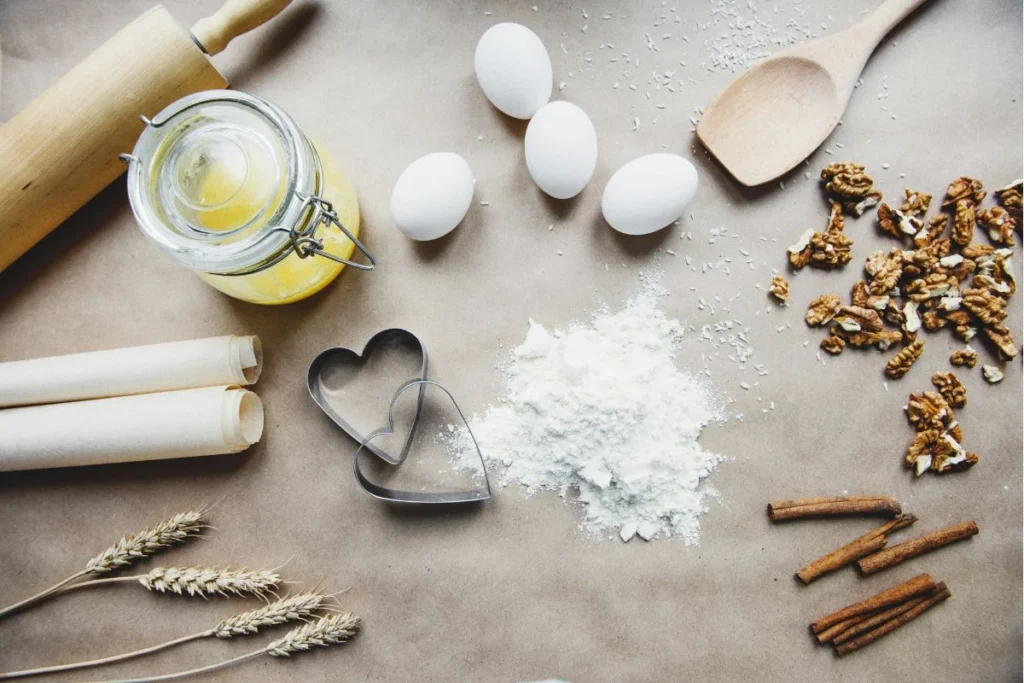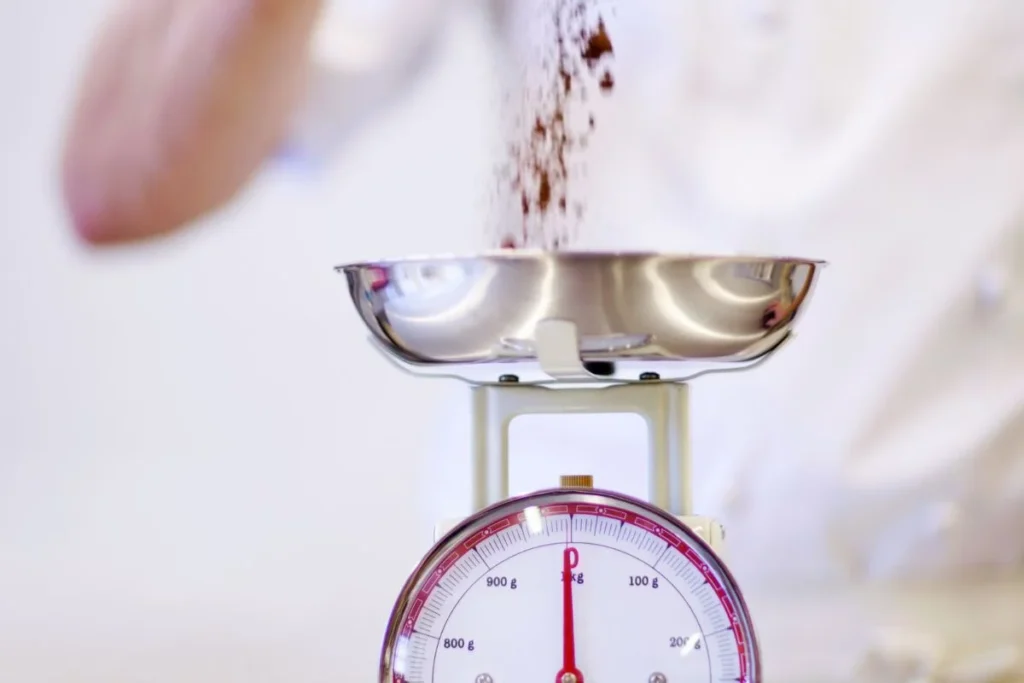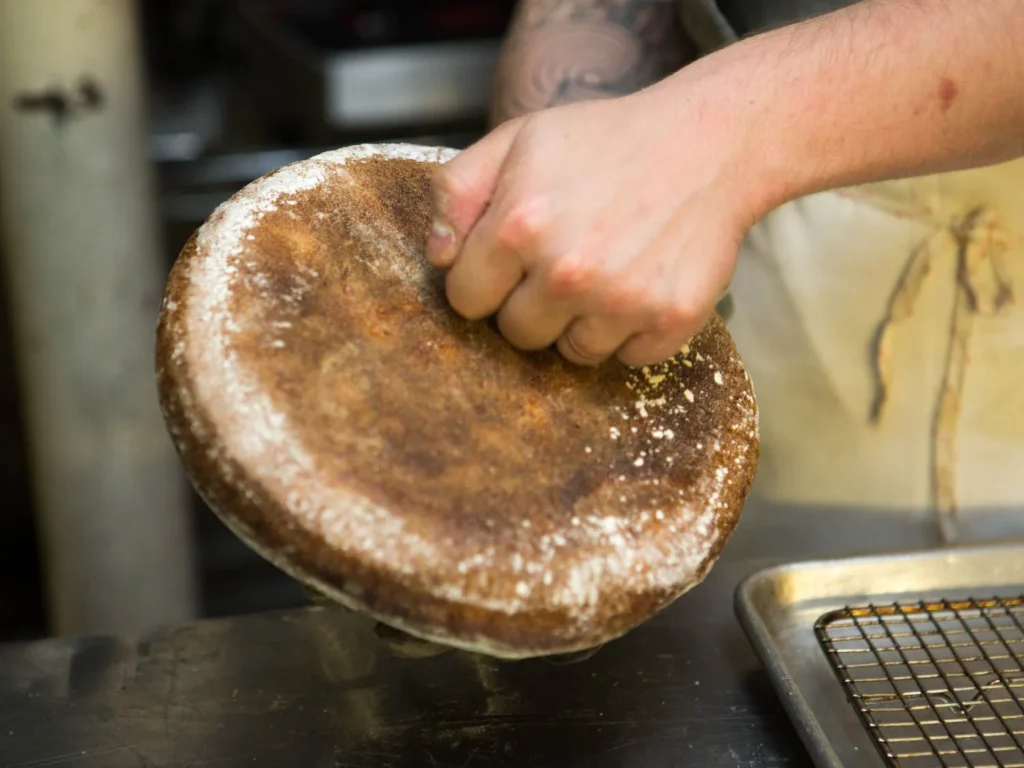
How to Get Rid of Baking Powder Taste in Cake after Baking
Have you ever baked a cake only to find that it has an unpleasant, bitter taste from baking powder? It can be quite a disappointing experience, especially if you’ve put a lot of effort into creating a delicious cake.
In this article, we will explore the reasons behind this issue and provide you with effective solutions to get rid of that unwanted baking powder taste.
Table of Contents
Toggle3 Common Reasons for Baking Powder Taste in Cake After Baking
If you’ve ever bitten into a slice of cake only to be met with an unpleasant baking powder aftertaste, you’re not alone. It’s a common issue that many bakers encounter, and there are several reasons behind it. Understanding these reasons is the first step towards preventing and rectifying the problem.
Here are the Three most common culprits for that lingering baking powder taste:
Inadequate Mixing
One of the primary reasons for a baking powder aftertaste is inadequate mixing of the batter. Baking powder is a leavening agent that creates the airy, light texture we love in cakes. However, if it’s not evenly distributed throughout the batter, you may end up with pockets of concentrated baking powder. These pockets can result in a bitter or metallic taste in the finished product.
To avoid this, it’s crucial to mix your batter thoroughly, ensuring that the baking powder is evenly incorporated. Pay special attention to the corners of the mixing bowl and any stubborn dry spots to guarantee a well-mixed batter.
Incorrect Measurement
Accurate measurements are fundamental in baking. Using too much baking powder can lead to that unwelcome aftertaste. Even a slight excess can throw off the delicate balance of flavors in your cake. It’s essential to follow the recipe’s measurements precisely and use a kitchen scale for accuracy whenever possible.
Different recipes may call for varying amounts of baking powder, so don’t assume that a one-size-fits-all approach will work. Be meticulous in your measurements to ensure the perfect rise and taste in your cakes.
Stale or Expired Baking Powder
The freshness of your baking powder plays a crucial role in the taste of your cake. Over time, baking powder can lose its potency, leading to inadequate leavening and an off-putting aftertaste. Check the expiration date on your baking powder, and if it’s expired or nearing expiration, it’s time to replace it with a fresh batch.
Store your baking powder in a cool, dry place, and keep it tightly sealed to preserve its effectiveness. Using fresh baking powder ensures that your cakes rise appropriately without leaving behind any undesirable flavors. Regularly check and rotate your baking ingredients to maintain the quality of your baked goods.

How to Fix Baking Powder Taste in Cake after Baking | 6 Simple Methods
So, you’ve baked a cake, but there’s an unpleasant baking powder aftertaste that’s putting a damper on your culinary triumph. Fear not, as we’re here to guide you through the process of rectifying this issue step by step.
With a few simple but effective techniques, you can transform your cake into a delightful treat that’s free from any unwanted bitterness.
Method 1: Airing it Out
One of the simplest and most natural methods to eliminate the baking powder taste is to allow your cake to air out. After baking, let the cake cool completely on a wire rack. Once it has cooled, cover it with a clean kitchen towel or plastic wrap, ensuring that it’s not airtight.
Leave it to sit for several hours or, ideally, overnight. This resting period allows any excess baking powder flavor to dissipate, resulting in a milder and more enjoyable taste.
Method 2: Sweet Solutions
Sugar is a fantastic flavor balancer and can work wonders in masking the baking powder taste. Here’s how to sweeten up your cake:
- Powdered Sugar Dusting: Sift a fine layer of powdered sugar over the top of your cake. The sweetness of the sugar will help counteract the bitterness of the baking powder.
- Sweet Syrup: Prepare a simple syrup by combining equal parts of sugar and water. Bring the mixture to a boil, then let it cool. Once your cake has cooled, drizzle this sweet syrup over it. The syrup will not only enhance the cake’s moisture but also add a pleasant sweetness that offsets the baking powder taste.
Method 3: Frosting Magic
A flavorful frosting can be a game-changer when it comes to masking the baking powder taste. Choose a frosting that complements the flavor of your cake. Here’s what you can do:
- Cream Cheese Frosting: Cream cheese frosting is a versatile option that pairs well with a variety of cake flavors. Its creamy, slightly tangy profile can beautifully complement and balance out the baking powder taste.
- Chocolate Ganache: If your cake is chocolate-based, a rich chocolate ganache can do wonders. The deep, decadent flavor of the ganache can effectively cover any unwanted bitterness.
Method 4: Vanilla Extract
Vanilla extract is a baker’s best friend. Its delightful aroma and flavor can help mask the bitter notes of baking powder. Here’s how to use it:
Vanilla Wash: Mix a teaspoon of pure vanilla extract with a few tablespoons of water. Lightly brush this mixture over the top of your cake. The vanilla will infuse the cake with its delightful essence, making the baking powder taste less prominent.

Method 5: Fresh Fruits
Fresh fruits are not only a tasty addition to your cake but also a natural way to refresh the taste and reduce the prominence of the baking powder flavor. Consider the following options:
- Berries: Fresh berries like strawberries, blueberries, or raspberries can add a burst of color, flavor, and moisture to your cake.
- Citrus Slices: Thin slices of citrus fruits like lemon, lime, or orange can provide a zesty and refreshing contrast to the baking powder taste.
Method 6: Creamy Dream
Whipped cream, cream cheese, or buttercream can provide a delightful and creamy cover-up for your cake. These options not only enhance the cake’s texture but also add rich and enjoyable flavors that can balance out the baking powder taste.
With these step-by-step solutions, you can confidently address and rectify the baking powder aftertaste in your cake. Baking should be a joyful experience, and these techniques ensure that every slice of your cake is a delectable delight.
Tips for Reducing Baking Powder Aftertaste in Cake
Experiencing a baking powder aftertaste in your cake can be disheartening, but with a few proactive measures, you can significantly reduce or even eliminate it.
These four tips will help you address this issue, ensuring that your cakes are consistently delicious and free from unwanted bitterness.

1. Precise Measurement
Accurate measurement of ingredients is the foundation of successful baking. When it comes to baking powder, even a small variation can lead to a noticeable aftertaste. To ensure precise measurement:
- Use a kitchen scale: Weighing your ingredients is the most accurate way to measure baking powder. This eliminates any guesswork and guarantees that you’re using the right amount.
- Level-off measurements: When using measuring spoons, level off the ingredient with a flat edge to achieve an exact quantity. Too much baking powder can intensify the aftertaste.
By being meticulous with your measurements, you can avoid the common mistake of using excess baking powder and prevent the aftertaste from occurring in the first place.
2. Sift Dry Ingredients
Sifting your dry ingredients, including baking powder, before adding them to your wet ingredients is a crucial step. This not only removes any lumps but also ensures even distribution of the leavening agent in the batter.
Even distribution prevents concentrated pockets of baking powder, which can lead to an aftertaste.
3. Baking Powder Alternatives
If you’re concerned about the aftertaste, consider using alternative leavening agents like baking soda or self-rising flour. Here’s how to incorporate these substitutes:

- Baking soda: Use 1/3 to 1/2 teaspoon of baking soda for each teaspoon of baking powder in your recipe. Baking soda requires an acid, so make sure your recipe includes ingredients like buttermilk, yogurt, or vinegar.
- Self-rising flour: Self-rising flour already contains leavening agents, including baking powder. Use it in recipes that call for all-purpose flour and baking powder to reduce the amount of baking powder needed.
These alternatives can help mitigate the aftertaste while still providing the desired rise in your cake.
4. Test and Adjust
Baking is as much a science as it is an art. To avoid or correct a baking powder aftertaste, consider the following testing and adjustment strategies:
- Test in small batches: If you’re experimenting with a new recipe or a substitution, consider making a smaller batch first. This allows you to assess the taste and texture without wasting a full cake.
- Gradual adjustments: If you’re dealing with a recipe that’s giving you an aftertaste, try reducing the baking powder incrementally in subsequent attempts. Gradual adjustments help you pinpoint the optimal balance between rise and taste.
By testing and adjusting your recipes, you can refine your baking skills and consistently produce cakes that are free from the baking powder aftertaste.
How to Get Rid of Baking Powder Taste in Cake after Baking | Final Thoughts
In conclusion, the unpleasant baking powder aftertaste in your cake can be a disappointment, but it’s a common issue with practical solutions. First, ensure you measure your ingredients accurately, use quality mixing tools, and distribute baking powder evenly.
If the aftertaste persists, try airing out your cake or sweetening it with powdered sugar, syrup, or flavorful frostings. Vanilla extract, fresh fruits, and creamy toppings can also help mask the taste.
Additionally, consider alternatives like baking soda or self-rising flour and be open to testing and adjusting your recipes. With these techniques, you can transform your cakes into delectable delights, free from unwanted bitterness. Happy baking!
Lindsey Mackenzie
About me
Hi there! I’m Lindsey Mackenzie, the founder of Bake Smartly. Baking has been my passion since childhood, growing up in my father’s bakery. With Bake Smartly, I’m excited to share my love for all things sweet and savory. Join me on this delicious journey as we whip up scrumptious treats and sprinkle joy into every bite!






